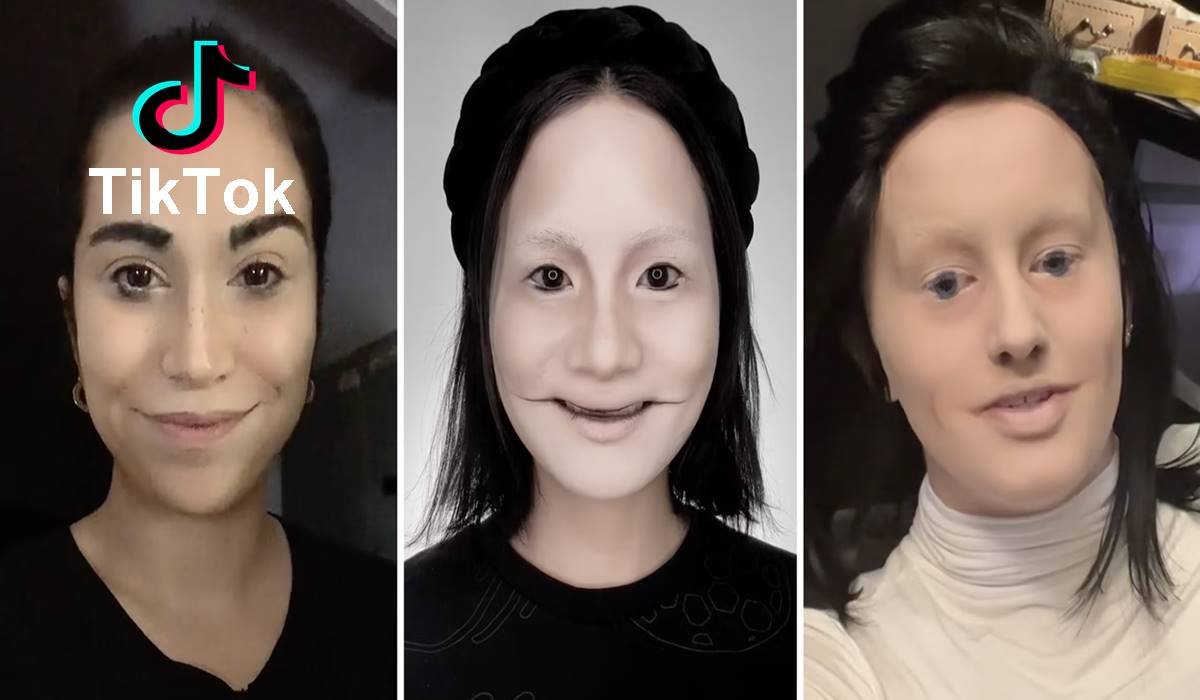TikTok, a platform known for its diverse trends, has recently embraced a captivating makeup trend that delves into the intriguing concept of the ‘uncanny valley.’ This trend involves creators presenting themselves with pallid complexions, hollow eyes, and subtly skewed features, accompanied by mesmerizing background music. These videos have garnered immense popularity, accumulating up to 13 million likes on the platform.
Understanding the Uncanny Valley Phenomenon
The uncanny valley refers to a psychological state of discomfort experienced when encountering something that closely resembles but is not entirely human-like. This concept serves as the foundation for the TikTok makeup trend in question. While humans generally appreciate the evolving human-like features in artificial objects, there is a point at which the likeness becomes too eerie, leading to an unsettling reaction. The phenomenon is commonly associated with humanoid robots but can also be triggered by CGI in video games and movies.
READ ALSO: BRICS Membership: Pakistan Strategic Move Seeking Amidst Shifting Global Power Dynamics
Factors Influencing the Uncanny Valley Effect
The uncanny valley effect is not solely dependent on appearance; the movement and mannerisms of the entity also play a crucial role. Mike Seymour from the University of Sydney emphasizes that even a static image appearing human can be unnerving if animated poorly.
Various theories attempt to explain the eerie sensation induced by hyper-realistic robots. One such theory suggests a connection between the uncanny valley effect and the avoidance of danger, rooted in an innate human fear of death. Additionally, being reminded of our mortality could contribute to the discomfort experienced while interacting with lifelike androids.
Neurological aspects also come into play, as the brain perceives faces and humans in a distinctive manner. The Thatcher effect, highlighting difficulties in detecting modifications in upside-down faces, illustrates how the brain flags potential threats or anomalies.
Origin of the Uncanny Valley Concept
Masahiro Mori first proposed the uncanny valley concept in 1970, using a graph of affinity versus human likeness to explain the idea. According to the graph, affinity peaks before plummeting dramatically, creating a ‘valley,’ hence the term.
TikTok’s Impact on the Uncanny Valley
As TikTok users experiment with the uncanny valley makeup trend, some viewers appear unaffected, sparking debates in the comment section. Discussions revolve around the potential for society to gradually overcome the uncanny valley due to increased exposure to robots and CGI characters. A 2021 study reported positive experiences when participants interacted with human-realistic avatars, suggesting a shift in attitudes towards the uncanny valley. Technological enhancements, superior graphics, and progress in simulating light and skin responses contribute to this change.
However, the discussion about ‘digital humans’ has evolved to include concerns about societal and legal implications rather than solely focusing on the uncanny valley. This shift suggests a more complex evolution in our perception of lifelike beings.
In conclusion, TikTok’s uncanny valley makeup trend not only captivates audiences but also opens up discussions about the psychological and societal implications of our interactions with lifelike entities in the digital realm.
